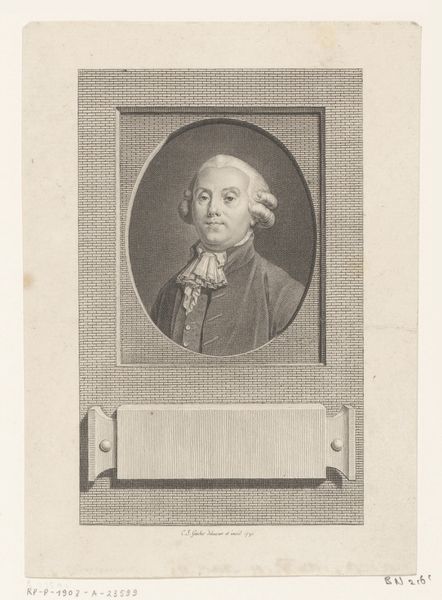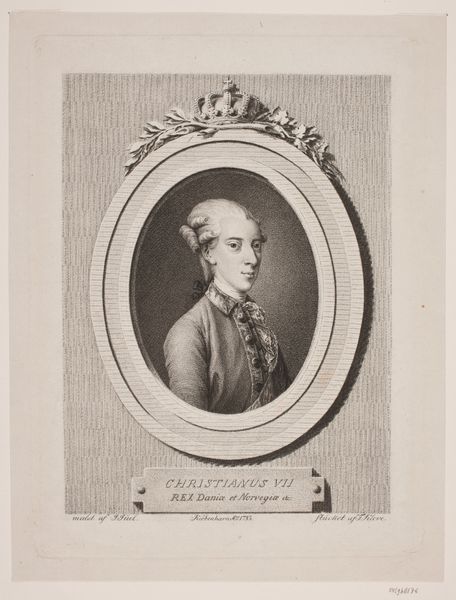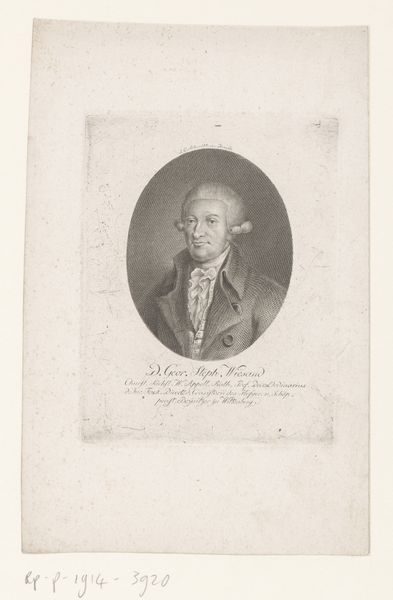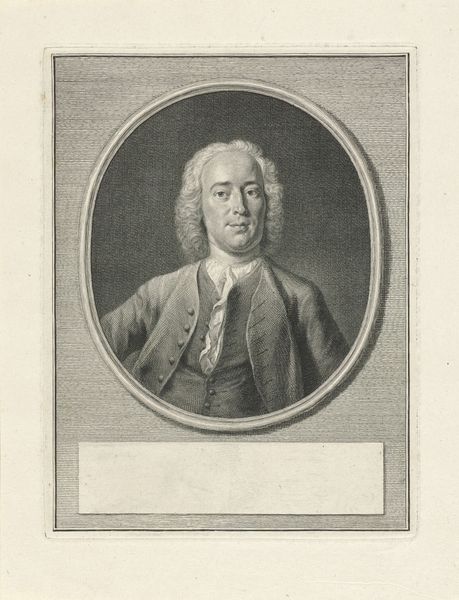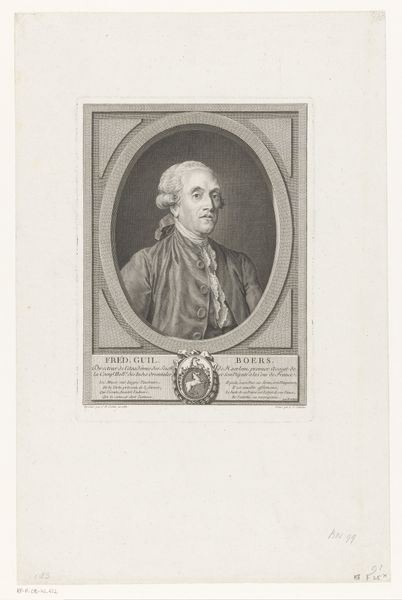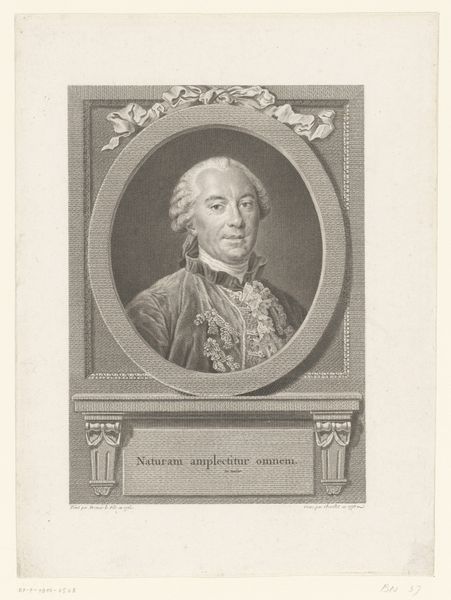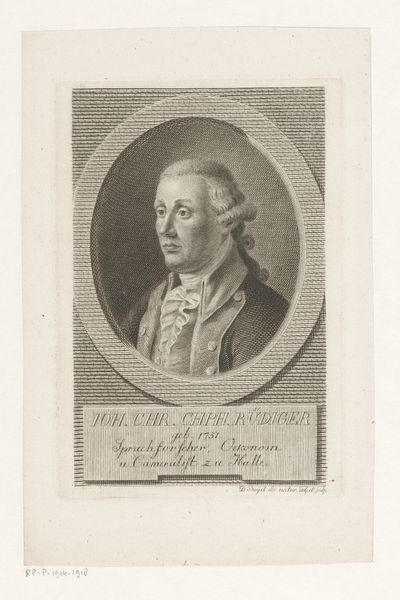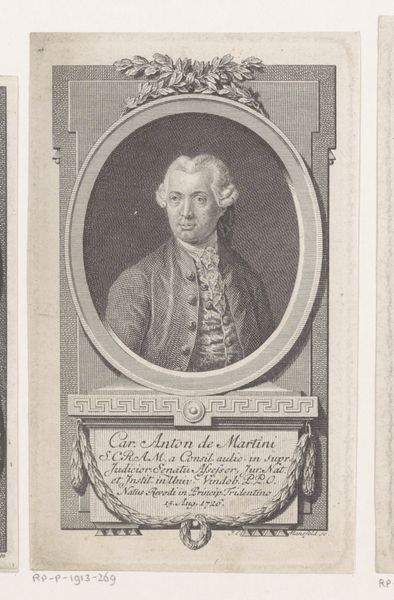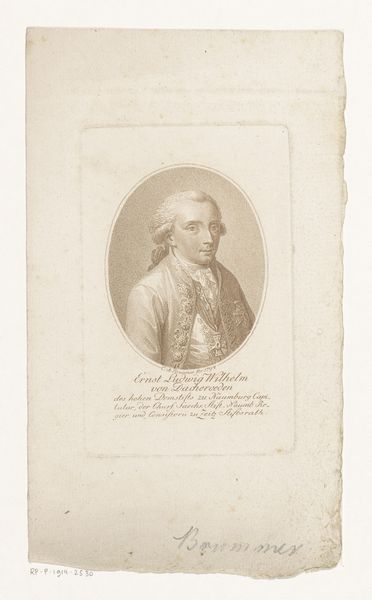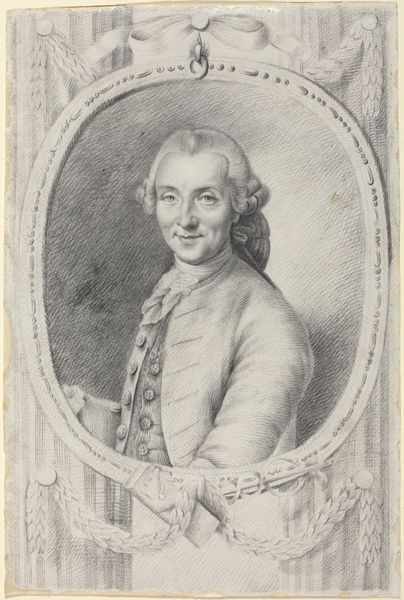
print, engraving
#
portrait
#
neoclacissism
#
16_19th-century
# print
#
19th century
#
line
#
engraving
Dimensions: 172 mm (height) x 105 mm (width) (bladmaal)
Curator: This is a print of Jens Schielderup Sneedorff, by Johan Samuel Lymann. It’s an engraving that dates from the 18th or 19th century. Editor: I'm immediately struck by how formal and staged it feels, like peering into a constructed world rather than observing reality. The rigid lines forming a kind of frame around him certainly reinforce that impression. Curator: Indeed. As a print, it reflects the mechanics of image production in the period. Look closely, and you’ll notice how the varying densities of lines create depth and texture. The labor involved in creating this from start to finish is considerable. How does the means of production connect to the function of the work? Editor: The choice to immortalize Sneedorff via print, making him accessible, speaks volumes. It aligns with broader social movements questioning rigid hierarchies. Who had access to portraits previously, and how does reproducing the image democratize or change our perception of power here? It is interesting to me to wonder how this connects with the politics of representation and identity in the era. Curator: That's astute. Printing made images more accessible and replicable, affecting distribution. This particular print also emphasizes social status by way of dress and his formal title as noted on the work. The materials themselves – ink, paper, the metal plate used for engraving - carry histories. They connect us to trade routes, labor practices, and evolving print technologies of the era. Editor: Absolutely. Considering these portraits through a wider, intersectional lens, challenges the usual hero-worship. How complicit was Sneedorff, within existing power structures? What other histories might compete against this singular visual record we have, especially with regards to the many and diverse experiences from this period. Curator: Understanding the artwork involves considering not only Lymann’s skill but also the societal systems influencing the choices around representation. What and who got visualized—and what was intentionally left out? The image, along with its means of manufacture, become a valuable historical source, providing insight into societal standards. Editor: Indeed. Looking beyond mere surface, we expose stories of social dynamics, material realities, and human subjectivity interwoven within this printed legacy. I like how looking at art like this lets us re-evaluate narratives passed down through art. Curator: I agree. It changes how we see prints as historical objects to consider as an image and material both.
Comments
No comments
Be the first to comment and join the conversation on the ultimate creative platform.
